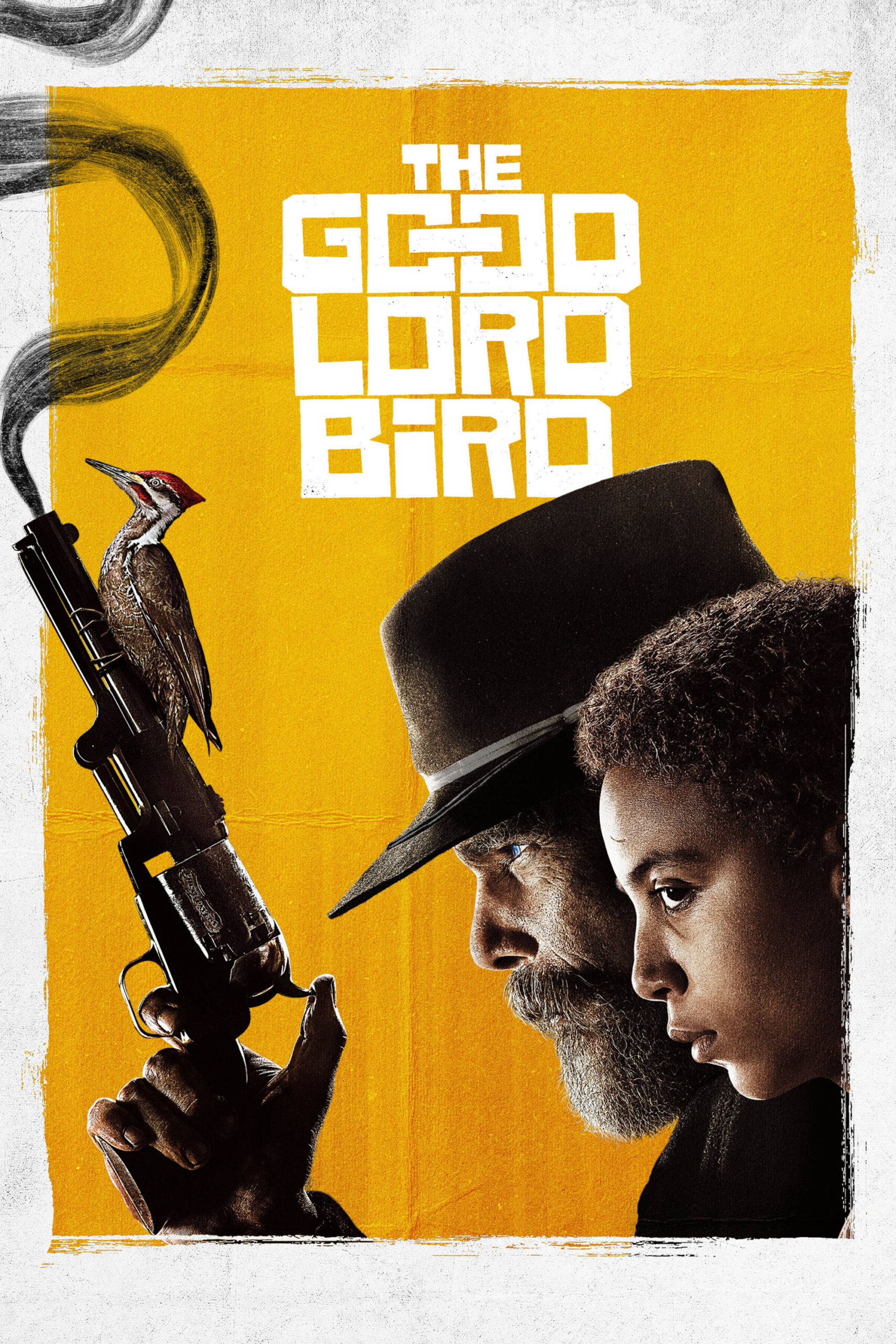Spoilers:
- Henry is actually a boy.
- John Brown is executed.
- Henry survives Harper’s Ferry raid.
- Brown believes Henry is a girl.
- Fred dies in the Kansas battle.
- Henry steals a Bible.
- Henry gives a speech for Brown.
- Henry finally gains freedom.
Statistics for “The Good Lord Bird”
Book Details
- Title: The Good Lord Bird
- Author: James McBride
- Published Year: 2013
- Genre: Historical Fiction
- Publisher: Riverhead Books
- Pages: 417
Awards
- National Book Award for Fiction (2013)
Plot Summary
The novel follows Henry Shackleford, a young slave in Kansas Territory, who becomes involved with John Brown, an abolitionist. Disguised as a girl, Henry, or “Onion,” experiences the journey leading to the Harpers Ferry raid. McBride mixes humor and history to explore racial identity and shared humanity.
Adaptations
- TV Mini-Series (2020) starring Ethan Hawke
Themes
- Racial identity
- Freedom and slavery
- Historical interpretation
Main Characters
- Henry Shackleford (“Onion”)
- John Brown
- Frederick Douglass
Critical Reception
The Good Lord Bird received praise for its blending of humor and sensitive historical topics. McBride’s narration style was highlighted for its originality and engaging pace. Some criticize its comedic tone against serious backdrop.
“The Good Lord Bird”, a novel by James McBride is a brilliant exploration of American race relations, embodied in a captivating narrative that marries history with humor. Set in the pre-Civil War era, the novel carefully balances the tension between the narrative of Onion, a young enslaved boy, and the complex figure of John Brown, a fervent anti-slavery advocate. The depth of McBride’s characterization is notable; through Onion’s ambiguous identity, McBride challenges orthodoxies, prompting a reflection on societal norms, concepts of masculinity, and race.The novel uses humor to humanize characters in the most emotional and tragic circumstances, offering unexpected insights into the human capacity for resilience and adaptability. McBride’s perceptiveness in integrating social awareness and historical fact is compelling. He successfully offers a nuanced portrayal of the complexity of our history, without over-simplifying good and evil.”The Good Lord Bird” is thought-provoking and poignant, showcasing a deep understanding of the dramatic consequences of struggle, compassion, and the desire for freedom. McBride’s vivid storytelling instills empathy, enlightening readers on the intricacies of race relations in US history and stirring emotional understandings that resonate powerfully beyond the novel’s final pages. Through the pages of “The Good Lord Bird”, we learn a history laden with injustice and brutality but laced with resilience and bravery, as we live through Onion’s unique perspective on a critical moment in American history. In the end, the deep exploration of race, identity, and freedom presents a provocative reexamination of historical narratives. “The Good Lord Bird” is a testament to McBride’s sophisticated storytelling, rich historical understanding, and his capacity to reinvent the nuances within loaded circumstances with a critical yet compassionate gaze. It is a true masterpiece that elicits introspection even as it pulses with an adventurous spirit.
Introduction to “The Good Lord Bird”
“The Good Lord Bird” by James McBride is an audacious romp through a critical period in American history. Awarded the National Book Award for Fiction in 2013, this novel blends historical fact with fiction in an often hilarious and fantastical manner. The narrative centers around Henry Shackleford, a young enslaved boy, who ends up accompanying the infamous abolitionist John Brown during the tumultuous events leading up to the Harper’s Ferry raid.
Interesting Facts and Known Speculation
- James McBride’s Characterization: The novel takes liberty with historical figures, especially John Brown, portrayed as both a madman and a hero—a complex mix of humor and gravitas.
- Unique Perspective: The use of Henry, a fictional character, allows for a fresh and subjective viewpoint on historical events.
- Cultural Reflection: Some speculate about the novel’s critique of modern race relations through its depiction of 19th-century America.
Bizarre and Interesting Elements
Perhaps the most bizarre element in “The Good Lord Bird” is Henry’s mistaken identity as a girl, which becomes a recurring theme that leads to numerous humorous and tense situations. This cross-dressing aspect is both a comedic device and a commentary on identity and survival.
Public Perception Over Time
Upon release, “The Good Lord Bird” received critical acclaim for its unique voice and approach to a serious topic. The combination of comedy, tragedy, and historical insight resonated with many readers.
Over time, the book has become a topic of discussion in academic circles, exploring its themes of race, identity, and freedom. The novel has also been adapted into a miniseries, expanding its reach and fostering renewed interest. Critics and readers alike continue to debate its portrayal of historical events and figures, often highlighting the fine line it walks between making serious points and providing entertainment.
The Good Lord Bird: A Snappy Beat List
Introduction: Meet Henry Shackleford, a young slave in Kansas Territory, who gets wrapped up in John Brown’s anti-slavery crusade. A case of mistaken identity turns Henry into “Henrietta,” kickstarting a wild historical adventure.
Beat 1: Mistaken Identity
Henry’s life flips when he’s freed by John Brown, albeit as a girl. Hello, Henrietta!
Beat 2: The Gang’s All Here
Joined by a motley crew, Brown’s ragtag army takes on slavery. Misfits, mayhem, and missions ensue.
Beat 3: Close Calls and Cross-Dressing
Henry, now Henrietta, navigates life on the run, dodging danger and discovering freedom’s complexities.
Beat 4: The Battles Begin
From small skirmishes to Harpers Ferry, John Brown’s war against slavery escalates, with Henry in the thick of it.
Beat 5: Harpers Ferry
The climax. Brown’s ambitious raid aims to incite a massive slave revolt. Spoiler: things don’t go as planned.
Beat 6: Fallout
The aftermath of the raid sees Brown captured and tried. Henry reflects on their journey and the fight for freedom.
Beat 7: Legacy
In the end, Henry gazes at the legacy left behind. Brown’s actions stir the nation, and the seeds of Civil War are sown.
Wrap-Up
“The Good Lord Bird” is a whirlwind tale of identity, freedom, and the absurdity of life. It’s historical fiction with a punch, examining the fine line between heroism and madness, all while questioning the true price of liberty.

Overview of “The Good Lord Bird”
“The Good Lord Bird” is a historical novel by James McBride. It uses a unique blend of humor and tragedy to explore themes of freedom, identity, and conflict during the time of John Brown and the abolitionist movement in the U.S. The story is told from the perspective of a young enslaved boy who is mistaken for a girl.
Story Opening
The opening of the story is striking. It sets the tone and introduces us to the protagonist’s perspective. The protagonist is dealing with the harsh realities of slavery, which evokes immediate empathy. The diction is straightforward, making the situation clear without unnecessary embellishment. McBride employs vivid but accessible language to ground us in the time period while inviting us into the inner thoughts of the young narrator.
Breakdown of the Story Formula
- Exposition: Introduces the protagonist, Henry “Onion” Shackleford, and his situation as a young enslaved boy in the pre-Civil War era.
- Inciting Incident: Onion meets John Brown, which changes the trajectory of his life.
- Rising Action: Onion travels with Brown and his followers, navigating encounters with violence, humor, and moral dilemmas.
- Climax: The confrontation at Harpers Ferry marks a turning point, as Onion struggles with his identity and choices.
- Falling Action: After the climax, the consequences of the confrontation unfold, emphasizing the complexities of freedom and identity.
- Resolution: The story concludes with Onion’s eventual understanding of his place in the world, grappling with the legacy of Brown’s actions.
Character vs. Story Driven
The story is more character-driven. While the overarching events are significant, it is the development of Onion and his interactions with other characters that truly propel the narrative. Onion’s growth and experiences offer a deeper message about humanity and the struggle for freedom.
Memorable Characters
What makes Onion a memorable character is his voice. He is witty, sensitive, and insightful. His perspective as a young boy grappling with complicated adult issues adds depth. Onion’s humor amidst dire circumstances creates a blend of lightness and tragedy that sticks with the reader. His observations challenge stereotypes and provide a nuanced take on identity.
Main Characters Description
- Henry “Onion” Shackleford: The protagonist; a young enslaved boy mistaken for a girl. Onion provides a unique perspective on the events he experiences, highlighting themes of race and identity.
- John Brown: Radical abolitionist leader. He is portrayed as both a man of conviction and complicated morals, inspiring Onion while also placing him in dangerous situations.
- Mrs. Brown: John Brown’s wife. She represents the domestic side of the Brown family and provides insight into the emotional toll that the abolitionist cause takes on families.
- Freeman: A fellow abolitionist and companion to Onion. His portrayal serves as a foil to Onion’s character, offering different viewpoints on freedom and sacrifice.
Writing Template for Story Flow
Below is a simple template you can follow for structuring a character-driven story like “The Good Lord Bird”.
- Character Introduction: Start with an engaging introduction of the protagonist, focusing on their current situation and internal conflicts.
- Inciting Incident: Introduce a pivotal event that sends the character on a journey.
- Develop Supporting Characters: Introduce other key characters who influence the protagonist’s journey and perspective.
- Character Growth: Show how the protagonist evolves through experiences, decisions, and relationships.
- Climax: Create a high-stakes moment that challenges the protagonist’s beliefs and objectives.
- Resolution: Conclude with the protagonist’s understanding of their identity and the implications of their journey.
Simple Summary of the Story
In simple terms, “The Good Lord Bird” is about a young enslaved boy who disguises himself as a girl to survive the upheaval of the 1850s. Through his interactions with John Brown and the abolitionist movement, he learns about courage, identity, and the complexities of freedom during a tumultuous period in American history.
Inciting Incident
The inciting incident in “The Good Lord Bird” is when Henry Shackleford, a young enslaved boy, meets John Brown. This meeting changes his life and draws him into the chaos of the abolitionist movement. Symbolically, this moment represents the beginning of Henry’s transformation from a passive observer of slavery to an active participant in the struggle for freedom.
Act Structure Overview
The book is divided into clear acts that follow Henry’s journey.
-
Act 1: Introduction
This act establishes Henry’s life as a slave and introduces major characters like John Brown. The tone is serious but also laced with humor, creating a unique juxtaposition.
-
Act 2: Rising Action
Henry’s adventures with Brown are both thrilling and dangerous. The conflicts intensify, particularly when they face hostile forces. This act showcases the moral complexities of their actions.
-
Act 3: Climax
The climax occurs during the raid on Harpers Ferry. This moment encapsulates the heart of the narrative—sacrifice, violence, and a plea for justice. The tensions feel palpable as the stakes rise for all the characters.
-
Act 4: Falling Action
After the raid, the aftermath reveals the consequences of their actions. The fallout dances between victory and loss, shifting perspectives.
-
Act 5: Resolution
The story wraps up with Henry’s reflection on his journey, raising questions about identity and morality. The ending provides a sense of closure but leaves readers pondering the complexities of freedom.
Climax and Emotional Capital
The climax at Harpers Ferry carries significant emotional weight. It’s the culmination of Henry’s journey, filled with tension and fear. The build-up leads to this moment through a series of close calls and moral dilemmas faced by Henry and John Brown. Readers feel the intensity of the fight, as lives hang in the balance, illustrating the cost of the struggle for freedom.
Tension and Release
The book effectively builds tension through escalating conflicts and high-stakes scenarios. Each encounter feels tighter than the last, pulling readers in. The release often comes through moments of reflection or humor, offering brief respites before plunging back into tension. This push and pull keeps the narrative engaging and highlights the tragic absurdity of the historical context.

The Ending of The Good Lord Bird Explained
The ending of “The Good Lord Bird” reveals the fate of Henry “Onion” Shackleford. He survives the raid on Harpers Ferry and eventually escapes. As an adult, he reflects on his past and the impact of John Brown’s actions in the fight against slavery. Onion discovers his own identity and grapples with the complexities of freedom and race. He shares his story, symbolizing the fight for equality.
Writers’ Categorization of the Ending
Writers might categorize the ending as a coming-of-age resolution, where personal growth and social issues intertwine.
Symbolic, Thematic, and Speculative Meanings
- Symbolic: Onion’s survival represents hope and resilience in the face of oppression.
- Thematic: The themes of identity and freedom are central; Onion’s story showcases the journey from confusion to self-acceptance.
- Speculative: It raises questions about how the legacy of violence impacts future generations.
Loose Ends and Payoffs
The ending resolves several loose ends:
- Onion finds peace with his identity.
- Major figures like John Brown’s intentions are clarified.
- There is closure on the futility of war and the personal cost of the struggle for freedom.
Character Changes
By the end, Onion transforms from a confused boy to a reflective man. He starts understanding his role in a larger fight against injustice. He accepts his past and learns to take ownership of his story.
Lessons for Writers
Writers can learn the importance of character development. The ending illustrates how personal and historical narratives are linked, showing that characters can reflect broader societal issues. Creating a satisfying conclusion can involve tying personal growth to larger themes, making the ending resonate more with readers.
Dialogue Style in The Good Lord Bird
The dialogue in “The Good Lord Bird” is rich and vibrant, reflecting a mix of historical authenticity and creative flair. Each character has a distinct voice, often infused with humor, tension, and a gritty realism that draws readers into their world.
Examples of Dialogue
Characters often express themselves through sharp exchanges. For instance, when Henry, a young enslaved boy, is forced to navigate his identity amidst the strife of abolition:
“I ain’t no girl, I ain’t no boy — I’m just me.”
This line reveals Henry’s struggle with identity and the harsh realities he faces.
Quintessential Character Moment
A defining moment for Henry occurs when he determines to stand up against oppressive figures. His assertion, “Nobody’s gonna make me fold,” encapsulates his growth and determination.
Iconic Lines
Several lines stand out:
- “The Lord works in mysterious ways, just like a man.” – This reflects on faith and perseverance in dire situations.
- “Sometimes you gotta be a little crazy to survive.” – This line highlights the absurdity required to navigate the harsh realities of life.
Dialogue Uniqueness
The dialogue is unique because it blends historical vernacular with emotional depth. Characters often communicate in a way that feels authentic but also serves the thematic elements of freedom, identity, and social justice. It also varies across different characters, showcasing their backgrounds and experiences.
Dialogue Density
The script is dialogue-heavy, encapsulating the characters’ emotional arcs and historical context through conversations. It emphasizes themes over lengthy descriptions, making it engaging.
Realism in Dialogue
The dialogue is highly realistic, grounded in historical context yet written to resonate with modern readers. It captures the rhythms of speech and the complexities of human interaction amidst adversity.
Lessons for Writers
Writers can learn to:
- Develop distinct voices for each character.
- Use dialogue to reveal character depth and motivation.
- Balance dialogue with action to enhance pacing.
Scene Walkthrough
Consider a scene where Henry confronts John Brown about his plans:
“You talk a lot about freedom, but what does that mean for us?” Henry asks, eyes wide with defiance.
This question forces John to reflect on his intentions while deepening Henry’s understanding of the broader struggle.
The tension mounts as John responds, “Freedom is worth any sacrifice, boy.” The exchange drives home the stakes involved, highlighting the clash of ideals and the personal costs of their fight.
Henry’s realization here is pivotal. He moves from being passive to taking an active role in shaping his destiny. This dialogue-driven moment showcases character development, theme, and conflict all at once.
The Good Lord Bird
A feathered riddle, a paradox in flight,
Whispers of freedom in a cage made of light.
- Is he a savior or just a jest?
- A truth in masquerade, unfit for the best.
- Colors collide on the canvas of fate,
- History’s jester navigates its weight.
In a world of shadows, he stands at the door,
Wings stretched wide, yet longing for more.
Not purely for hope, nor solely for jest,
But a question in form, daring us to guess.
Writing Insights from The Good Lord Bird
James McBride packs a lot of lessons into “The Good Lord Bird.” Here are some unique insights from the text:
- Voice Matters: The protagonist, Onion, has a distinct voice. This authenticity draws readers in. Make sure your characters’ voices are genuine and varied.
- Humor in Darkness: McBride balances heavy themes with humor. Don’t shy away from inserting levity amidst serious topics. It humanizes characters.
- Perspective Is Key: The narrative shifts between personal and historical perspectives. This blending adds depth. Experiment with differing viewpoints to enrich your story.
- Character Growth: Onion evolves throughout the story. Ensure your characters aren’t static. They should face challenges that prompt change.
- Setting as a Character: The Civil War backdrop isn’t just scenery; it’s integral to the plot and characters. Make your setting a living part of your narrative.
- Dialogue Drives Action: McBride’s dialogue often escalates tension. Use dialogue strategically to reveal conflicts and advance the plot.
- Blend Genres: McBride mixes historical fiction with adventure and comedy. Don’t lock yourself into one genre; blend to create something fresh.
- Symbolism Adds Layers: The titular “Good Lord Bird” symbolizes freedom and identity. Effective symbols deepen reader engagement. Use symbols meaningfully.
- Challenge Historical Narratives: McBride disrupts traditional narratives around slavery and the Civil War. Don’t be afraid to question commonly held beliefs in your writing.
- Embrace Ambiguity: Not all questions are answered. Leaving some elements unresolved can provoke thought and discussion among readers.
James McBride Discography
- Go Tell It on the Mountain (1995) – A narrative about navigating faith and identity.
- The Color of Water: A Black Man’s Tribute to His White Mother (1996) – A memoir exploring race and family.
- Song Yet Sung (2008) – A historical novel set in the 1850s about escape from slavery.
- Miracle at St. Anna (2008) – A story of African American soldiers in World War II.
- The Good Lord Bird (2013) – A novel about young Henry “Onion” Shackleford and his adventures with John Brown.
- Deacon King Kong (2020) – A tale of love, loyalty, and and the chaos of a Brooklyn neighborhood.
Writer’s Style
McBride’s writing blends humor and poignancy while tackling complex themes of race, identity, and family.
Review 1: Excerpt: “The Good Lord Bird never loses sight of the fact that it is, above all, a story. As such, it’s riotously entertaining, frequently hilarious, and occasionally heartbreaking… McBride paints a vivid, visceral portrait of this ‘paradise of misfits’ that’s more detailed and compassionate than any history book could be.”Link: [The Guardian](https://www.theguardian.com/books/2013/oct/15/good-lord-bird-james-mcbride-review)Review 2: Excerpt: “Wonderfully noisy, riotous, funny, sometimes disgusting. This is a book you might read in one of those blurry, mad, page-turning gluts. Or you might be like me, needing to stop, walk away, maybe for a day, maybe longer, while you wait for your piece of heart to grow back. … ‘Good Lord Bird’ is just so brilliant.”Link: [Chicago Tribune](https://www.chicagotribune.com/entertainment/books/ct-xpm-2013-08-21-ct-prj-0825-good-lord-bird-james-mcbride-20130821-story.html)Review 3: Excerpt: “It’s no surprise that James McBride’s The Good Lord Bird won the National Book Award for Fiction in 2013. The plot, characters, and writing are all superb. The protagonist’s voice is fresh, engaging, and believable, making the book enjoyable from beginning to end. Highly recommend.”Link: [Goodreads](https://www.goodreads.com/review/show/882877600)Review 4:Excerpt: “This book, told with surreal calm and disruptive comedy, is a great American novel, a grand achievement of voice, character and narrative. It is defiant, electrifying and unforgettable. McBride has made a major statement on the flexibility of novelistic tone, as well as the presumptive limits of so-called historical fiction.”Link: [Los Angeles Times](https://www.latimes.com/books/la-xpm-2014-may-08-la-ca-jc-james-mcbride-20140511-story.html)Review 5: Excerpt: “The Good Lord Bird is just so brilliant. It had everything that I want out of a novel: potent storytelling and respect for the reader. The story that McBride has given us was so fantastically surprising and delightfully dramatic.”Link: [NPR](https://www.npr.org/2013/08/20/209555065/good-lord-bird-sketches-out-an-irreverent-look-at-abolitionism)
- The Good Lord Bird (National Book Award Winner): A … – Amazon.com
- The Good Lord Bird – Wikipedia
- The Good Lord Bird by James McBride | Goodreads
- The Good Lord Bird | James McBride
- Finding Humor In Horror: James McBride’s The Good Lord Bird …
- James McBride’s ‘Good Lord Bird’ – The New York Times
- Review: The Good Lord Bird, James McBride – Much Madness is …
- Just finished The Good Lord Bird by James McBride : r/books
- The Good Lord Bird | Benedict Cumberbatch
- Should Your Book Club Read The Good Lord Bird by James McBride?




Leave a Reply